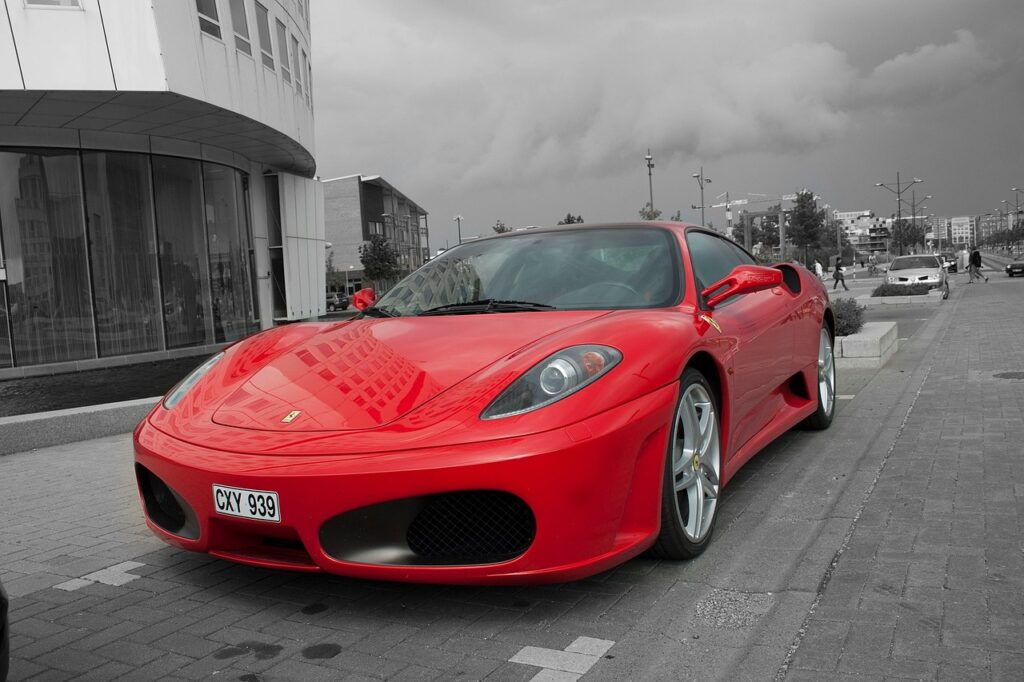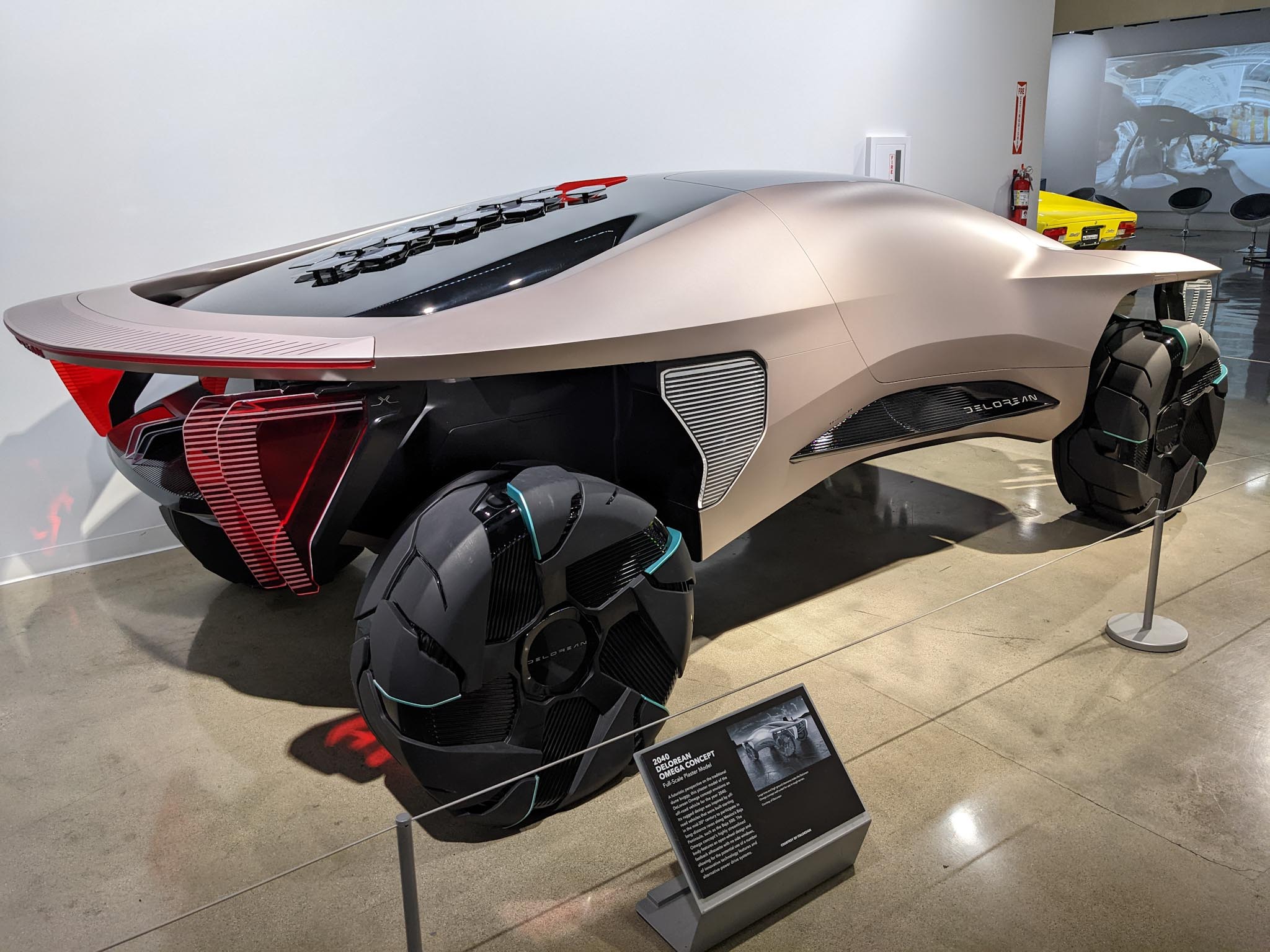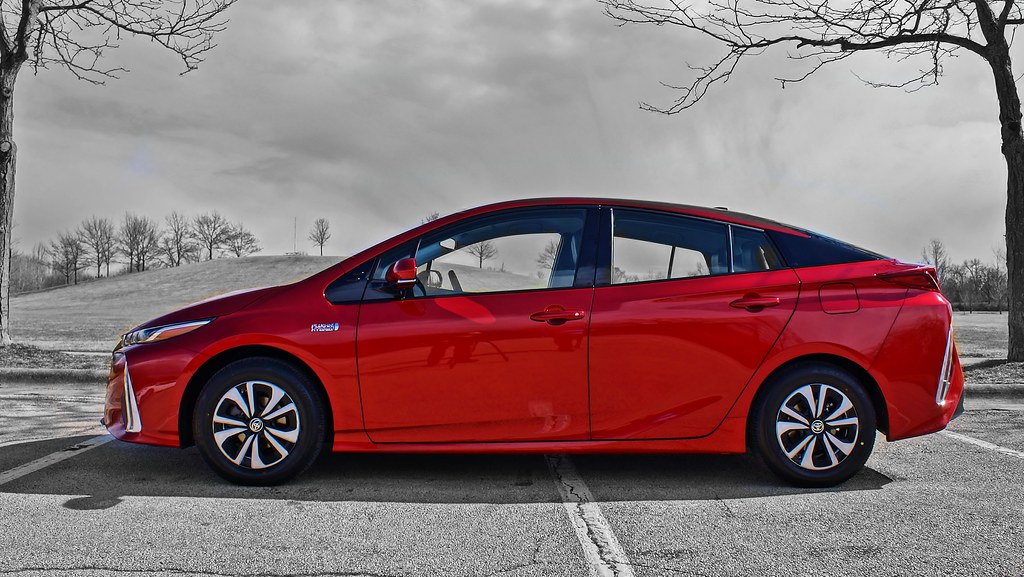
For many drivers, an SUV represents more than just a vehicle; it’s a trusty companion for family adventures, a reliable workhorse, or a comfortable daily commuter. We invest in these machines expecting them to carry us through years of journeys, battling diverse terrains and challenging weather. However, lurking beneath the gleaming paint and robust chassis is a silent, insidious enemy that can prematurely end an SUV’s life: rust.
Rust, that ugly orange corrosion, is the silent killer that eats away at the undercarriage, frame, fenders, and sometimes even the doors, turning a proud ride into a junkyard candidate. It doesn’t care about the bulletproof engine, the smooth transmission, or the cloud-like suspension; once it sets in, the structural integrity and aesthetic appeal of your investment can rapidly diminish. This issue is particularly pronounced in regions exposed to harsh winter salts or coastal humidity, where the elements relentlessly conspire against metal.
Understanding which SUVs are built to withstand this relentless assault, and which ones are unfortunately prone to early corrosion, is paramount for any informed consumer. This comprehensive guide, informed by extensive observation and data, aims to equip you with the knowledge to make smart decisions. We’ll delve into the engineering and material choices that distinguish the long-haul heroes from those that, sadly, show their age far too quickly.

1. **Toyota 4Runner: The Indestructible Off-Roader**
If there’s one SUV that embodies the spirit of enduring ruggedness, it’s the Toyota 4Runner. This beast is built like a tank, featuring a robust body-on-frame design—an old-school construction choice that famously laughs in the face of rust. Toyota doesn’t cut corners; they go the extra mile with meticulous anti-corrosion treatments, applying electro-deposition coatings on critical parts to ensure long-term resilience.
Furthermore, the 4Runner’s thick underbody sealants are specifically designed to hold up even in the most brutal Northeast winters, where road salt can be as abundant as snowfall. This commitment to protection means owners frequently share anecdotal evidence, like photos of their 15-year-old 4Runners displaying barely a speck of corrosion on the frame. This isn’t just luck; it’s a testament to Toyota’s legendary reliability combined with top-tier rust resistance.
For those who embrace off-roading, the 4Runner is an unparalleled choice. Snowy trails, salty roads, wet forests—it’s built to conquer them all. From its generous high ground clearance, which minimizes direct exposure to road spray and debris, to its meticulously sealed wheel wells and rust-resistant fasteners, every aspect of its design speaks to durability. Toyota engineered this SUV to outlive nearly everything around it, making it a true warrior against environmental wear and tear.
While previous generations, specifically the third-gen models from 1996 to 2002, had some reported issues with frame rot, the fifth-gen (2010–present) has proven to be as solid as rust-proofed steel. Whether your driving consists of daily commutes or ambitious rock-crawling expeditions, the 4Runner stands as a no-rust SUV that you can confidently keep for a full decade, or even longer, without worrying about the insidious creep of corrosion.
Car Model Information: 2020 Toyota 4Runner TRD Off Road Premium
Name: Toyota 4Runner
Caption: 2024 Toyota 4Runner, TRD Sport trim
Manufacturer: Toyota
Aka: Toyota Hilux Surf (Japan, 1983–2009)
Production: October 1983 – present
ModelYears: 1984–present (US)
Class: unbulleted list
Layout: unbulleted list
Chassis: Body-on-frame
Successor: unbulleted list
Categories: 1990s cars, 2000s cars, 2010s cars, 2020s cars, All-wheel-drive vehicles
Summary: The Toyota 4Runner is an SUV manufactured by the Japanese automaker Toyota and marketed globally since 1984, across six generations. In Japan, it was marketed as the Toyota Hilux Surf (Japanese: トヨタ・ハイラックスサーフ, Hepburn: Toyota Hairakkususāfu) and was withdrawn from the market in 2009. The original 4Runner was a compact SUV and little more than a Toyota Hilux pickup truck with a fiberglass shell over the bed, but the model has since undergone significant independent development into a cross between a compact and a mid-size SUV. All 4Runners have been built in Japan at Toyota’s plant in Tahara, Aichi, or at the Hino Motors (a Toyota subsidiary) plant in Hamura. The name “4Runner” was created by copywriter Robert Nathan with the Saatchi & Saatchi advertising company as a play on the term “forerunner”. The agency held contests to invent new names for Toyota’s forthcoming vehicles. According to Toyota, the “4” described the vehicle’s 4-wheel drive system while “Runner” was a reference to its all-terrain capabilities and how it could “run” off-road. For some markets, the Hilux Surf was replaced in 2005 by the lower cost but similar Fortuner, which is based on the Hilux platform. As of 2021, the 4Runner is marketed in the Bahamas, Bolivia, Canada, Chile, Colombia, Costa Rica, El Salvador, Guatemala, Panama, Peru, the United States and Venezuela. Many markets that did not receive the 4Runner, such as Europe and the Middle East, instead received the similarly designed Land Cruiser Prado, another SUV that shared many of the same components. The 4Runner came in at number five in a 2019 study by iSeeCars.com ranking the longest-lasting vehicles in the US. The 4Runner had 3.9 percent of vehicles over 200,000 miles (320,000 km), according to the study.
Get more information about: Toyota 4Runner
Buying a high-performing used car >>>
Brand: Toyota Model: 4Runner
Price: $39,500 Mileage: 87,295 mi.
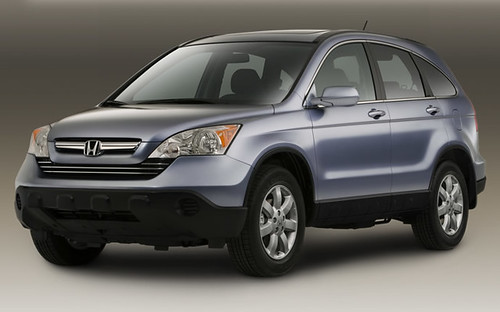
2. **Honda CR-V: Urban Commuter, Rust Avenger**
You don’t necessarily have to commit to a full-fledged off-roader to achieve impressive rust resistance. The Honda CR-V elegantly demonstrates that even an everyday commuter SUV can adeptly dodge rust, offering peace of mind to drivers in various climates. Honda, a brand known for its commitment to continuous improvement, learned a significant lesson from past experiences where older CR-Vs, particularly in the early 2000s, exhibited rear wheel well rust after just a few years of ownership.
Since those earlier models, Honda has significantly beefed up its anti-corrosion game, implementing professional-grade improvements across its manufacturing process. The CR-V models from 2017 to the present exemplify this enhanced approach, being constructed with advanced materials such as zinc-coated steel and galvanized panels. These materials provide a robust first line of defense against oxidation, significantly extending the vehicle’s lifespan in challenging conditions.
Moreover, these newer CR-Vs feature advanced anti-rust undercoatings that create a protective barrier against road salt and moisture. In regions like Michigan, known for its harsh, salt-laden winters, it’s not uncommon to encounter CR-Vs with well over 150,000 miles on the odometer that show not a single rust bubble. This enduring resistance is a testament to Honda’s upgraded engineering and material science, proving that the CR-V is built to last through many seasons of tough conditions.
The appeal of the CR-V isn’t solely in its rust resistance; it’s also a highly practical choice that doesn’t sacrifice comfort or fuel efficiency. It’s an efficient, safe, and durable long-term vehicle, making it an ideal choice for those who seek reliability without the bulk of a larger SUV. For drivers, the message is clear: regular rinsing after exposure to salt storms can help ensure that your CR-V easily delivers 10 or more years of service without encountering major rust issues, cementing its reputation as a smart, long-lasting investment.
Car Model Information: 2020 Honda CR-V 2WD Touring
Name: Honda CR-V
Caption: 2020 Honda CR-V e:HEV
Manufacturer: Honda
Aka: Honda Breeze (China, 2019–present)
Production: 1995–present
Class: Compact crossover SUV
BodyStyle: Sport utility vehicle
Layout: Front-engine, front-wheel-drive layout,Front-engine, four-wheel-drive layout
Chassis: Unibody
Predecessor: Honda Crossroad
Successor: Honda ZR-V
Categories: 2000s cars, 2010s cars, 2020s cars, All-wheel-drive vehicles, All articles containing potentially dated statements
Summary: The Honda CR-V (also sold as the Honda Breeze in China since 2019) is a compact crossover SUV manufactured by Japanese automaker Honda since 1995. Initial models of the CR-V were built using the same platform as the Civic. Honda began producing the CR-V in Sayama, Japan, and Swindon, United Kingdom, for worldwide markets, adding North American manufacturing sites in East Liberty, Ohio, United States, in 2007; El Salto, Jalisco, Mexico, in late 2007 (ended in early 2017); Alliston, Ontario, Canada, in 2012; and Greensburg, Indiana, United States, in February 2017. The CR-V is also produced in Wuhan for the Chinese market by Dongfeng Honda, and also marketed as the Breeze in China for the version produced at Guangzhou by Guangqi Honda. Honda states that “CR-V” stands for “Comfortable Runabout Vehicle,” while the term “Compact Recreational Vehicle” was used in a British car review article that was republished by Honda, associating the model name with the Sports Utility Vehicle abbreviation of SU-V. As of 2022, the CR-V is positioned between the smaller ZR-V (marketed as HR-V in North America) — with which the CR-V shares a platform — and the larger North American market Passport/Pilot or the Chinese market Avancier/UR-V. It is currently Honda’s best-selling vehicle in the world, and the second best-selling SUV globally in 2020.
Get more information about: Honda CR-V
Buying a high-performing used car >>>
Brand: Honda Model: CR-V
Price: $25,259 Mileage: 50,295 mi.
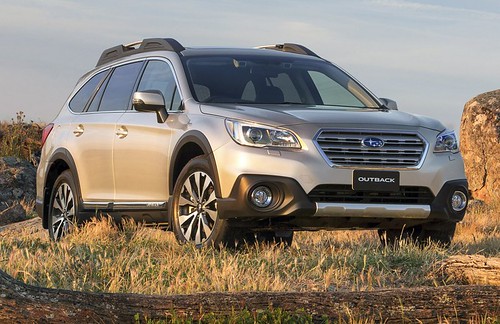
3. **Subaru Outback: Winter Warrior, Corrosion Champion**
There’s an ongoing, good-natured debate among automotive enthusiasts about whether the Subaru Outback should be classified as an SUV or a wagon. Regardless of the label, one thing is universally acknowledged: it effortlessly conquers winter roads. Subaru, while based in Japan, maintains manufacturing plants in Indiana, and its vehicles are meticulously engineered to perform exceptionally well in real-world climates, especially those with challenging weather conditions.
Since the 2015 model year, the Outback has received significant upgrades specifically aimed at enhancing its resistance to corrosion. These improvements include advanced underbody coatings that provide a tougher barrier against salt and moisture, as well as thoughtful drain hole designs that prevent water accumulation in critical areas. Furthermore, the subframe and wheel wells have undergone enhanced corrosion-proofing, addressing common points of vulnerability in many other vehicles.
Subaru owners are renowned for their loyalty, and this devotion stems from a fundamental reason: their vehicles consistently go the distance. This is particularly evident in regions like New England, where winters bring an abundance of road salt and moisture, yet Outbacks continue to perform reliably year after year. The symmetrical all-wheel drive system is celebrated for its ability to maintain stability on icy roads, but the true, often unseen, victory lies in how effectively the Outback combats rust on its less visible components.
It’s a common sight to observe a 10-year-old Outback with impeccably clean sills, spotless wheel arches, and absolutely no bubbling paint, even after enduring a decade of harsh conditions. This consistent performance against rust, combined with its practical nature and fuel efficiency, makes the Outback a standout choice. If you’re searching for an SUV that offers both reliability and robust rust protection without compromising on everyday usability, the Subaru Outback should undoubtedly be a top contender on your shortlist.
Car Model Information: 2014 Subaru Outback Limited
Name: Subaru Outback
Caption: 2014 Subaru Outback Premium
Manufacturer: Subaru
Production: 1994–present
ModelYears: 1995–present
Assembly: Ota, Gunma
Aka: Subaru Legacy
Class: Mid-size car
BodyStyle: station wagon
Categories: All Wikipedia articles written in American English, All articles with unsourced statements, Articles containing Japanese-language text, Articles with short description, Articles with unsourced statements from April 2012
Summary: The Subaru Outback is an automotive nameplate used by the Japanese automaker Subaru for two different themed vehicles: a Legacy-derived station wagon, the Outback (1994–present, also sold as Legacy Outback (Japanese: スバル・レガシィアウトバック, Hepburn: Subaru Regashi Autobakku) in some markets), and an Impreza-derived off-road themed hatchback, the Outback Sport (1994–2011). Most versions of the Outback wagon and Outback Sport have had all-wheel drive as standard equipment.
Get more information about: Subaru Outback
Buying a high-performing used car >>>
Brand: Subaru Model: Outback
Price: $23,359 Mileage: 65,481 mi.
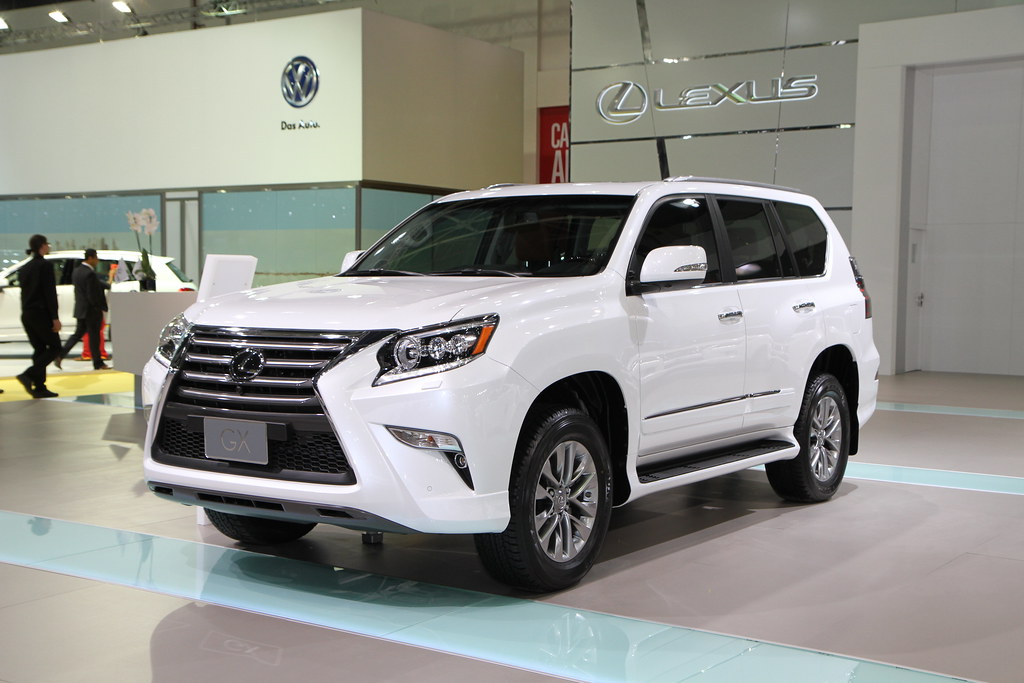
4. **Lexus GX: Luxury Meets Lasting Durability**
In the automotive world, luxury doesn’t always automatically equate to long-lasting durability, but the Lexus GX stands out as a glorious exception to this rule. Built on the same incredibly robust platform as the legendary Toyota Land Cruiser Prado, the GX can be thought of as a 4Runner dressed in a sophisticated tuxedo. Yet, despite its elegant appearance, it possesses an underlying toughness that rivals its more utilitarian sibling, solidifying its position as one of the best SUVs that don’t succumb to rust, even after a full decade of service.
Lexus employs a comprehensive strategy to ensure the GX’s exceptional longevity. This includes the use of advanced galvanized steel panels, which are inherently more resistant to corrosion than standard steel. Additionally, the frame components are treated with durable powder-coated finishes, providing a hard-wearing layer of protection. Every inch of the body, from top to bottom, receives a deep e-coat primer, a high-end protective measure that provides superior anti-corrosion properties often unseen in most American SUVs within a similar price bracket.
This meticulous attention to anti-corrosion engineering means the GX doesn’t merely survive in challenging climates; it truly thrives. It’s a familiar sight in cities like Denver, Buffalo, and Calgary, where it effortlessly shrugs off the corrosive effects of salted roads, almost as if it’s impervious to the elements. Its exceptional build quality ensures that road salt and environmental moisture have little impact on its structural integrity and appearance over time, maintaining its pristine condition for years.
Beyond its incredible rust resistance, the Lexus GX also delivers on the luxury front, offering powerful V8 engine options, sumptuously plush interiors, and the undeniable prestige associated with the Lexus badge. But beneath all that elegance and refinement lies an SUV that is practically immortal when it comes to combating winter wear. For the discerning driver who values impeccable taste and demands unwavering protection against rust, the Lexus GX is an ideal choice, blending opulent comfort with unparalleled durability.
Car Model Information: 2023 Lexus GX 460 Base
Name: Lexus GX
Caption: 2023 Lexus GX 460 (URJ150)
Manufacturer: Toyota
Aka: Toyota Land Cruiser Prado
Production: 2002 – present
ModelYears: 2003–present
Assembly: Tahara, Aichi
Class: Full-size car,Luxury car,SUV
BodyStyle: SUV
Layout: Front-engine, four-wheel-drive
Chassis: Body-on-frame
Categories: 2010s cars, 2020s cars, All-wheel-drive vehicles, All articles containing potentially dated statements, All articles with dead external links
Summary: The Lexus GX (Japanese: レクサス・GX, Hepburn: Rekusasu GX) is a mid/full-size luxury SUV sold in North American and Eurasian markets by Lexus, a luxury division of Toyota. The GX is based on the Toyota Land Cruiser Prado, from which it derives its off-road capability. Lexus introduced the first generation, known as the GX 470 in 2002, and subsequently became the third SUV to enter the Lexus lineup. A full-time four-wheel drive system is standard with low-range gearing. The 4.7-liter V8 engine in the GX 470 was the same as used on the larger LX 470. The firm next introduced the second-generation model in 2009, badged GX 460 to reflect the switch to a 4.6-liter V8 engine. Lexus later released a lower displacement GX 400 in 2012 for the Chinese market, with a 4.0-liter V6 engine. The third-generation model introduced in 2023 uses the GX 550 moniker with a twin-turbocharged 3.4-liter V6 engine and GX 550h with a turbocharged hybrid electric 2.4-liter four-cylinder engine. As of 2024, the GX is positioned between the larger LX or TX and the smaller RX. Though it is thought the GX has always been larger than the RX, from 2015 to 2022, the RX is slightly longer and slightly wider than the GX and therefore the GX was considered smaller. All GX production has occurred at the Tahara plant in Japan, alongside the Land Cruiser Prado and the export-minded Toyota 4Runner. Some countries classify the GX as a full-size vehicle (e.g., Australia), while some classify it as a mid-size vehicle (e.g., US), depending on local regulations.
Get more information about: Lexus GX
Buying a high-performing used car >>>
Brand: Lexus Model: GX
Price: $53,991 Mileage: 22,399 mi.
Read more about: Beyond the Odometer: Unpacking 3 Key Traits and 14 SUVs Built to Conquer 250,000 Miles and Beyond

5. **Mazda CX-5: The Understated Rust-Resistant Gem**
Mazda, perhaps unfairly, doesn’t always receive the full recognition it deserves in the competitive SUV segment. However, the CX-5 has quietly emerged as one of the smartest and most effective choices for drivers prioritizing rust resistance, especially for those seeking a vehicle under the $40,000 mark. The brand faced some serious rust-related challenges with earlier models, particularly pre-2012 vehicles in regions like Canada, which spurred them to make significant improvements.
Learning from these past issues, Mazda dramatically intensified its focus on rust prevention with the introduction of the CX-5. Beginning from 2017 onward, Mazda implemented a new strategy, integrating anti-corrosion high-tensile steel into the vehicle’s construction. This specialized steel offers superior strength and resilience against environmental degradation. Additionally, sealed seams were introduced to prevent moisture ingress, and multiple underbody treatments were applied to create a robust protective barrier.
As a direct result of these extensive engineering and material upgrades, CX-5 models now consistently demonstrate remarkable longevity, lasting nearly a decade in snowy climates with virtually no rust concerns. This impressive durability is, of course, contingent on drivers following basic wash routines to remove accumulated salt and grime. Owners in places like Minnesota have enthusiastically reported, “This is the first Mazda I’ve owned that hasn’t rusted to hell,” a clear indication of the brand’s successful turnaround in this crucial area.
Beyond its exceptional corrosion resistance, the Mazda CX-5 remains a stylish, engaging, and enjoyable vehicle to drive, all without requiring a hefty financial outlay. Combining its aesthetic appeal and dynamic performance with serious long-term corrosion resistance positions the CX-5 as a true sleeper SUV. It’s an investment that is not only easy on the eyes but also incredibly tough on rust, making it a highly compelling option for informed consumers seeking durability and value.
The first section meticulously unveiled the champions of corrosion resistance, those SUVs engineered with an unwavering commitment to durability that truly stands the test of time. Now, we must turn our attention to the other side of the automotive spectrum: vehicles that, despite their appealing exteriors or popular branding, unfortunately, fall short in the crucial battle against rust. For consumers in regions where road salt and humidity are common adversaries, ignoring these vulnerabilities can lead to significant financial strain and prematurely diminished vehicle life.
This next segment critically examines five midsize SUVs that have garnered a reputation for succumbing to severe rust relatively early in their lifespan, often well before hitting the 65,000-mile mark. Our analysis will delve into specific models and their common rust points, dissecting the design and manufacturing choices that contribute to their premature deterioration. Understanding these weaknesses is not just about avoiding future headaches; it’s about safeguarding your investment and ensuring your vehicle remains a reliable asset rather than a rapidly corroding liability.
Car Model Information: 2016 Mazda CX-5 Touring
Name: Mazda CX-5
Caption: Second generation CX-5 (KF; 2024)
Manufacturer: Mazda
Production: 2012–present
ModelYears: 2013–present
Class: Compact crossover SUV
BodyStyle: SUV
Layout: unbulleted list
Predecessor: unbulleted list
Categories: 2020s cars, All-wheel-drive vehicles, All articles containing potentially dated statements, All articles lacking reliable references, All articles with dead external links
Summary: The Mazda CX-5 is a compact crossover SUV, produced by Mazda since 2012. A successor to both the Tribute and the slightly larger CX-7, it is Mazda’s first model to feature the “Kodo” design language and the first model to be fully developed with a range of technologies branded as Skyactiv, including a rigid, lightweight platform combined with a series of engines and transmissions to reduce emissions and fuel consumption. Since 2019, the CX-5 is positioned above the smaller CX-30. As of 2022, depending on the region, the CX-5 is positioned right below the larger CX-50, CX-60 or the CX-8 within Mazda’s crossover SUV line-up. Since 2014, the CX-5 has consistently been Mazda’s best-selling model globally. It achieved record sales in 2019, with 444,262 units sold worldwide. As of March 2022, cumulative sales of the CX-5 reached around 3.5 million units.
Get more information about: Mazda CX-5
Buying a high-performing used car >>>
Brand: Mazda Model: CX-5
Price: $15,692 Mileage: 81,219 mi.
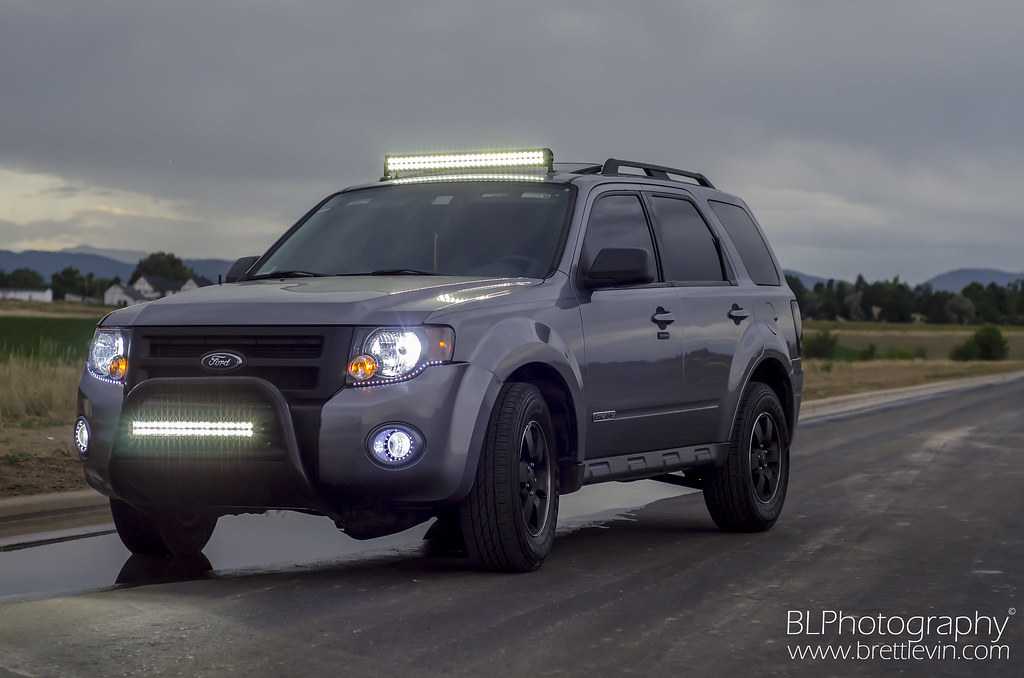
6. **Ford Escape: A Battle Lost to Corrosion**
While the Ford Escape often presents itself as a practical and popular choice in the compact SUV segment, its track record for rust resistance leaves much to be desired, particularly for models produced between 2013 and 2018. Owners in areas exposed to road salt frequently report the early onset of corrosion, manifesting noticeably in critical areas such as the rear wheel wells, the undercarriage, and around the hatch hinges. This premature bubbling and flaking paint can begin to appear alarmingly quickly, often by just the third winter of ownership, diminishing both the vehicle’s aesthetic appeal and its structural integrity.
A closer look reveals some of the engineering choices that contribute to this vulnerability. Ford’s use of galvanized panels, while present, appears to be thinner in comparison to many of its competitors, offering a less robust initial barrier against oxidation. Compounding this, the design of the wheel well splash guards on these models has been observed to leave certain critical areas of the chassis and body exposed to direct road spray and accumulated slush. This oversight allows corrosive elements to directly assault the metal surfaces, accelerating the rust process in hidden yet vital locations.
Even more concerning is the observation that more recent models (2019–2021) have not entirely remedied these underlying issues, with reports still surfacing about early rust formation. The progression of rust on these vehicles often starts as subtle paint bubbles, quickly advancing to visible peeling and, in severe cases, the formation of gaping holes. Mechanics have reported instances of 5-year-old Escapes being deemed unrepairable or uneconomical to fix due to extensively rusted-out rear subframes. For consumers residing in climates where road salt is a yearly reality, considering the Ford Escape without rigorous aftermarket rustproofing is a significant gamble with their long-term investment.
Car Model Information: 2008 Ford Escape Active
Name: Ford Escape
Caption: 2008 Escape Hybrid (US)
Manufacturer: Ford Motor Company
Aka: Unbulleted list
Production: 2000–present
ModelYears: 2001–present
Class: Compact crossover SUV
BodyStyle: SUV
Layout: Unbulleted list
Predecessor: Nissan Terrano II
Successor: Ford Territory (China)
Categories: 2010s cars, 2020s cars, All-wheel-drive vehicles, All Wikipedia articles written in American English, All articles with dead external links
Summary: The Ford Escape is a compact crossover SUV manufactured and marketed by the Ford Motor Company since the 2001 model year. The first Ford SUV derived from a car platform, the Escape fell below the Ford Explorer in size; the Escape was sized between the Ford EcoSport and Ford Edge. The 2005 model year Ford Escape Hybrid was the first hybrid-electric vehicle from Ford, and the first hybrid produced as an SUV. The first two generations of the Escape used the Ford CD2 platform (jointly developed with Mazda), leading to the release of the rebadged variants, the Mazda Tribute and Mercury Mariner; as with the Escape, both the Tribute and Mariner were marketed in North America (the Mariner was never marketed in Canada). In Europe, the Escape was initially branded as the Ford Maverick from 2001 to 2008 (replacing a Nissan-produced SUV). Under the mid-2000s “One Ford” globalization strategy, the third and fourth-generation designs of the Escape have been unified with the Ford Kuga, designed by Ford of Europe. Sharing a common body and chassis underpinnings (and several engines), the Escape and Kuga are manufactured in their home markets. As with previous generations, the fourth-generation Escape is offered with gasoline, hybrid, and plug-in hybrid options. Outside of North America, the Ford Escape is marketed in Australia, China, and Taiwan. In August 2025, it was announced that Ford will be discontinuing the Escape after the 2026 model year.
Get more information about: Ford Escape
Buying a high-performing used car >>>
Brand: Ford Model: Escape
Price: $20,991 Mileage: 31,101 mi.
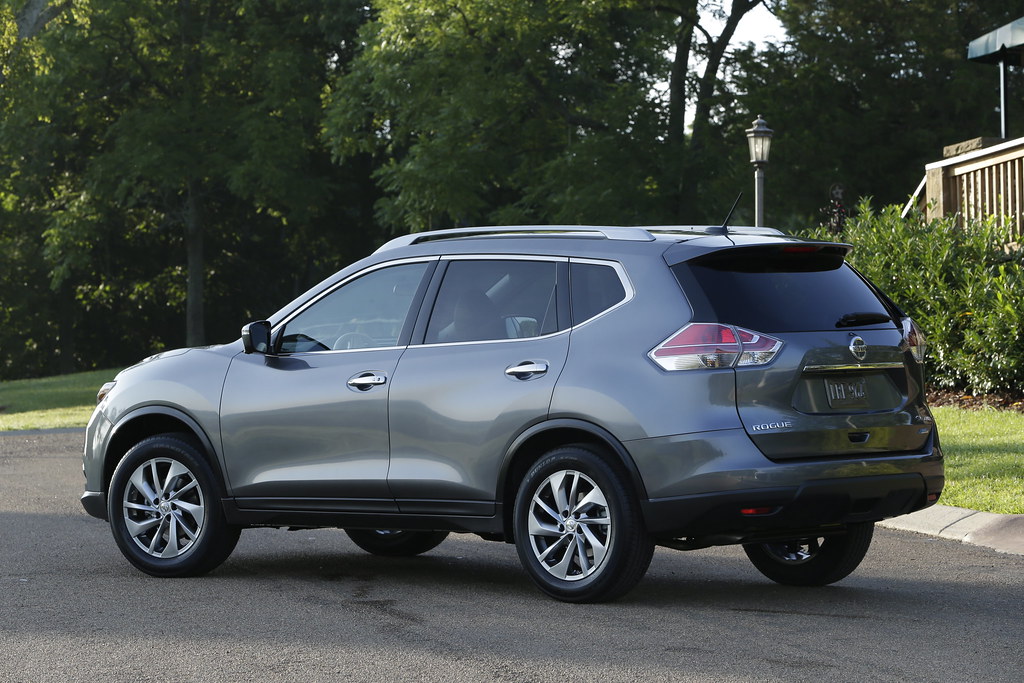
7. **Nissan Rogue: Aesthetic Appeal vs. Underlying Vulnerability**
The Nissan Rogue has certainly evolved, with Nissan making significant strides in its technological offerings and exterior design, appealing to a broad segment of the market looking for a modern, feature-rich SUV. However, beneath this contemporary facade, the Rogue, particularly models from 2014 to 2020, has a documented history of struggling with rust. This corrosion often makes its unwelcome appearance around the door sills, rocker panels, and even parts of the subframe, sometimes within a mere two to three winters of service. This issue is particularly prevalent in regions that experience moderate snowfall and extensive road salting.
The primary culprit often lies in the vehicle’s construction and protective measures. Salty slush and moisture have a tendency to accumulate in poorly sealed seams, especially in older Rogue models that were assembled in the United States. This ingress of corrosive agents into crevices and structural junctions initiates the rust process in areas that are not easily visible, allowing it to spread insidiously before detection. Compounding this problem is what many owners and automotive experts describe as a lack of comprehensive factory undercoating.
This deficiency in standard rust protection often necessitates that Rogue owners incur additional out-of-pocket expenses for aftermarket rustproofing treatments, a cost that should ideally be unnecessary for a modern family-oriented SUV. Evidence of these widespread issues is readily available across various online automotive forums, particularly Canadian ones, where numerous Rogue owners have shared alarming photographs depicting severely rusted rocker panels and compromised structural components after just four years of ownership. Such widespread and early corrosion issues raise legitimate questions about the long-term durability and value proposition of these specific Nissan Rogue generations for consumers in harsh climates.
Car Model Information: 2014 Nissan Rogue Sport S
Name: Nissan Rogue
Caption: 2014 Nissan Rogue SV (US)
Manufacturer: Nissan
Aka: Nissan X-Trail
Production: 2007–present
ModelYears: 2008–present
Class: Compact crossover SUV
BodyStyle: SUV
Layout: Front-engine, front-wheel-drive layout
Predecessor: Unbulleted list
Categories: 2010s cars, All-wheel-drive vehicles, All articles lacking reliable references, Articles lacking reliable references from November 2017, Articles with short description
Summary: The Nissan Rogue is a compact crossover SUV produced by the Japanese automobile manufacturer Nissan. It made its debut in October 2007 for the 2008 model year. Beginning in 2013 for the 2014 model year, the model has been merged with the X-Trail sold outside the North American market, making them identical. As of 2023, the Rogue was manufactured at the Nissan Smyrna Assembly Plant in Tennessee, United States and at the Nissan Motor Kyushu plant in Kanda, Fukuoka, Japan. Between August 2014 and March 2020, it was also built at the Renault Samsung Motors plant in Busan, South Korea under contract.
Get more information about: Nissan Rogue
Buying a high-performing used car >>>
Brand: Nissan Model: Rogue
Price: $15,030 Mileage: 63,623 mi.
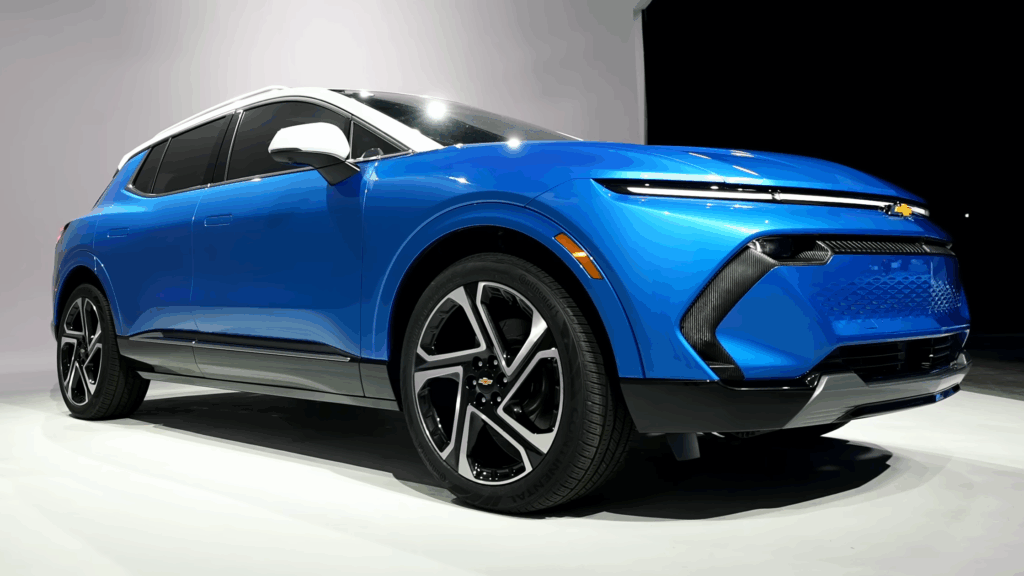
8. **Chevrolet Equinox: A Legacy of Premature Decay**
For those who appreciate American utility, the Chevrolet Equinox often ticks many boxes with its spacious interior, comfortable ride, and practical infotainment systems. Yet, a consistent and troubling Achilles’ heel for the Equinox, particularly models manufactured between 2010 and 2017, has been its pronounced susceptibility to rust. This model generation has earned a reputation for premature decay, with one of the most frequently cited complaints being widespread corrosion in the wheel wells and on the subframe components.
The protective coatings applied by Chevrolet during this period have been widely criticized for their inadequacy, often offering little more than a superficial barrier against the elements. Reports indicate that after just three winters in the unforgiving Midwest, the undercarriage of many Equinox vehicles can appear to have aged significantly, showing extensive rust development that belies the vehicle’s actual age. This rapid deterioration is a direct consequence of insufficient factory-applied rust inhibitors and protective treatments.
Owners have consistently documented early rust spots emerging near door frames, beneath the doors themselves, and within the rear hatch area, even when regular car washes are diligently performed. Alarmingly, some drivers have observed visible rust forming on their Equinox before the odometer even reached 60,000 miles, signaling a fundamental issue with the vehicle’s long-term material integrity. What further exacerbates this situation is the general absence of serious, long-term anti-corrosion warranties from Chevrolet for these models, often leaving owners to bear the full financial burden of extensive rust repair or premature vehicle replacement. For consumers in climates where rust is a significant concern, the Equinox’s otherwise appealing attributes are often overshadowed by its glaring deficiency in corrosion resistance, making it a potentially regrettable choice.
Car Model Information: 2024 Chevrolet Equinox Premier
Name: Chevrolet Equinox
Manufacturer: General Motors
Aka: ubl
Production: 2004–present
ModelYears: 2005–present
Class: Mid-size crossover SUV
BodyStyle: Sport utility vehicle
Layout: Transverse engine,Front-engine, front-wheel-drive layout
Predecessor: ubl
Categories: 2000s cars, 2010s cars, 2020s cars, All-wheel-drive vehicles, All Wikipedia articles written in American English
Summary: The Chevrolet Equinox is a crossover SUV introduced by Chevrolet in 2004 for the 2005 model year. It was intended to replace the North American Chevrolet Tracker and Chevrolet S-10 Blazer. The third-generation Equinox also replaced the first-generation Chevrolet Captiva. An all-electric battery-powered (BEV) version called the Equinox EV was introduced in 2022 with sales starting in 2023 for the 2024 model year. It adopts a separate design and underpinnings from the internal combustion engine powered Equinox.
Get more information about: Chevrolet Equinox
Buying a high-performing used car >>>
Brand: Chevrolet Model: Equinox
Price: $14,927 Mileage: 87,860 mi.
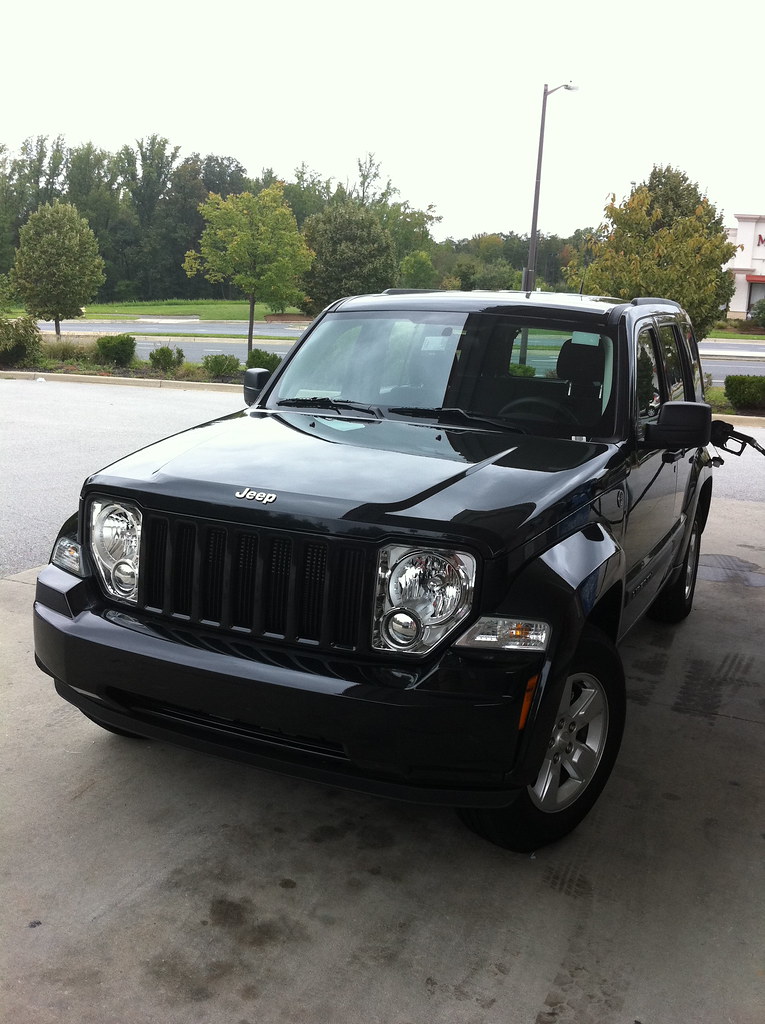
9. **Jeep Liberty: Off-Road Appearance, On-Road Vulnerability**
The Jeep Liberty, with its distinctly rugged appearance, evokes a sense of adventure and off-road capability, aligning with the brand’s iconic image. However, for those who purchased the second-generation Liberty, specifically models from 2008 to 2012, this illusion of toughness often dissolves quickly, replaced by the stark reality of severe rust. Across the infamous “Rust Belt,” numerous owners have recounted alarming tales of undercarriage corrosion so advanced that critical components, such as rear suspension mounts, have literally detached from the frame. This pervasive issue was significant enough to prompt investigations by the National Highway Traffic Safety Administration (NHTSA) into the severe undercarriage corrosion affecting these vehicles.
The fundamental flaw in the Jeep Liberty’s design and manufacturing, particularly within this generation, was its notoriously poor rustproofing on the frame and lower body panels. This critical oversight meant that vital structural components were left exposed or inadequately protected against the relentless assault of moisture and road salts. Compounding this vulnerability were observations of cheaper paint quality and poorly sealed wheel wells, which allowed corrosive elements to penetrate and accelerate the deterioration of the underlying metal.
Consequently, what might appear to be a rugged adventurer on the surface can rapidly transform into a significant and costly “welder’s project” within just three winters of exposure to harsh conditions. The structural integrity of these vehicles became compromised far too early in their lifespan, often before the vehicle loan was even repaid. For prospective buyers prioritizing long-term durability and rust resistance, especially in winter-prone regions, the Jeep Liberty from this era represents a considerable risk. Instead, a more robust and rust-resistant option from the Jeep lineup, such as a Wrangler or Grand Cherokee, would be a far more prudent investment for those who value longevity.
Car Model Information: 2022 Jeep Wrangler Unlimited Sport
Name: Jeep Liberty
Caption: 2022 Jeep Liberty
Manufacturer: Jeep
Aka: Jeep Cherokee
Production: 2001 – August 2012
ModelYears: 2002–2012
Class: Compact SUV
Related: Dodge Nitro,Jeep Commander
Layout: Front-engine, rear-wheel-drive layout,Rear-wheel drive
BodyStyle: SUV
Predecessor: Jeep Cherokee (XJ)
Successor: Jeep Cherokee (KL)
Chassis: Unibody
Assembly: Toledo, Ohio,Cairo,Valencia, Carabobo
Categories: 2010s cars, All-wheel-drive vehicles, Articles with short description, CS1: unfit URL, Cars discontinued in 2012
Summary: The Jeep Liberty is a four door unibody compact SUV manufactured and marketed by Jeep for model years 2002–2012 over two generations, internally designated the KJ (2002–2007) and KK (2008–2012), respectively. Both generations were marketed globally, including as the Jeep Cherokee outside North America. Introduced as a replacement for the Cherokee (XJ), the Liberty was priced between the Wrangler and Grand Cherokee and was the smallest of the 4-door Jeep SUVs until the car based 4-door Compass and Patriot arrived for 2007. Both generations were assembled at the Toledo North Assembly Plant in the United States and other countries including Egypt and Venezuela. The KK generation was manufactured alongside the closely related Dodge Nitro. Production ended in August 2012. The Liberty was superseded by the Jeep Cherokee.
Get more information about: Jeep Liberty
Buying a high-performing used car >>>
Brand: Jeep Model: Liberty
Price: $29,089 Mileage: 57,302 mi.
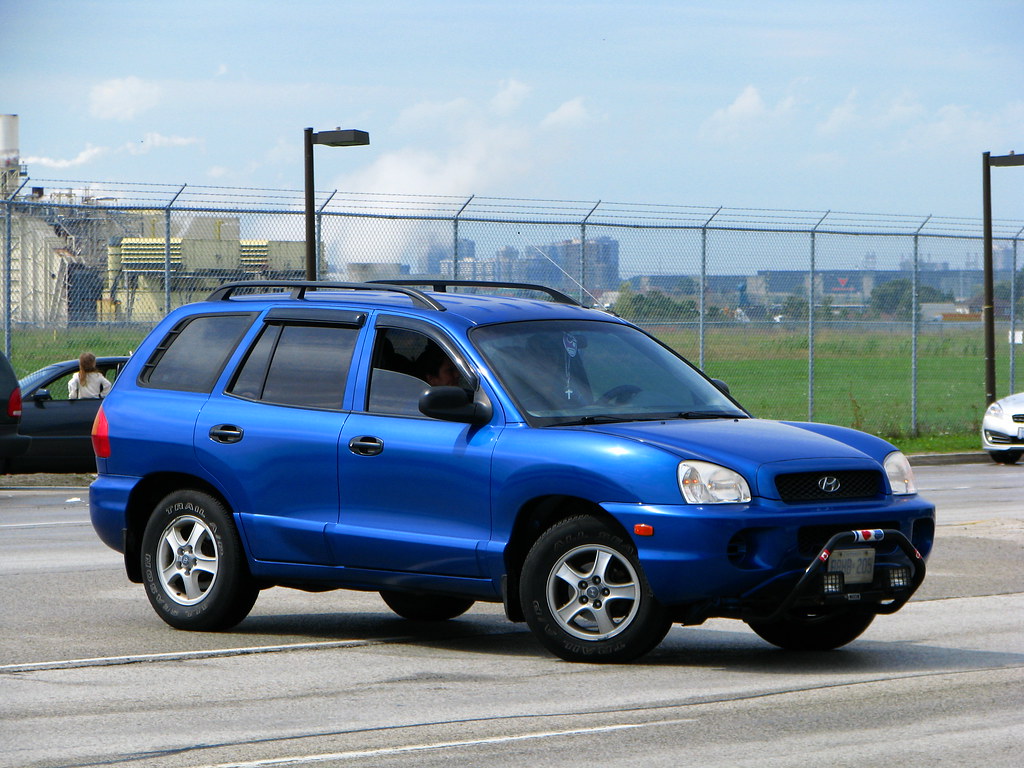
10. **Hyundai Santa Fe: Past Rust Challenges Shadowing Reliability**
Hyundai has commendably made substantial improvements in recent years, enhancing both the overall reliability and the feature sets of its vehicles. However, the brand’s journey to current standards was not without its challenges, particularly concerning rust resistance in earlier Santa Fe models. Specifically, vehicles produced between 2007 and 2014 were frequently plagued with pervasive rust issues, especially in snow-heavy U.S. states and throughout Canada. Common areas of concern included the rear wheel wells, the tailgate, and around the fuel filler doors, where corrosion would visibly take hold prematurely.
The underlying causes for these widespread rust problems were often attributed to poorly sealed seams and, regrettably, a factory undercoating that was described by many as “practically nonexistent.” These deficiencies allowed road salts and moisture to easily penetrate, initiating and accelerating the oxidation process. While modern SUVs are generally expected to withstand seven to ten years of service before exhibiting any serious signs of corrosion, the Santa Fe from this problematic era would frequently show significant rust development in as little as four years of ownership, severely impacting its perceived value and lifespan.
To their credit, Hyundai has demonstrated a clear commitment to addressing these past issues, with newer Santa Fe models from 2018 and onward showing marked improvements in both build quality and the application of anti-corrosion materials. These enhancements reflect a concerted effort to prevent a recurrence of the widespread rust complaints. Nevertheless, for any consumer considering a used Santa Fe from the early 2010s, it is absolutely imperative to conduct an extremely thorough inspection for signs of rust. Without such diligent scrutiny, purchasing one of these older models risks acquiring a vehicle that will continue to battle a losing fight against corrosion, undermining its long-term reliability and your financial investment.
**Safeguarding Your Investment: A Prudent Approach to SUV Ownership**
In the dynamic world of automotive purchasing, it’s easy to be swayed by a vehicle’s immediate appeal—its horsepower, cutting-edge infotainment, or the sleek lines that catch your eye on the dealership lot. Yet, as seasoned observers of vehicle longevity and performance, we understand that these superficial attributes can often obscure a far more critical factor: a vehicle’s inherent resistance to rust. This silent, insidious enemy doesn’t care about luxury interiors or panoramic sunroofs; all it takes is a few inadequately sealed seams and a single harsh winter to transform a dream ride into a rapidly deteriorating eyesore and a significant financial burden.
Our deep dive into SUVs that both defy and succumb to rust underscores a vital truth for every driver: the engineering and material choices made during a vehicle’s construction profoundly dictate its lifespan and long-term value. Knowing which models, like the steadfast Toyota 4Runner, Honda CR-V, Subaru Outback, Lexus GX, and Mazda CX-5, are meticulously engineered to withstand over a decade of environmental challenges is just as crucial as identifying those, such as the Ford Escape, Nissan Rogue, Chevrolet Equinox, Jeep Liberty, and Hyundai Santa Fe from certain generations, that are unfortunately prone to crumbling after just three winters.
Car Model Information: 2023 Hyundai Santa Fe
Name: Hyundai Santa Fe
Caption: Hyundai Santa Fe Luxury (fifth generation)
Manufacturer: Hyundai Motor Company
Aka: Hyundai Maxcruz (LWB, South Korea; 2013–2019)
Production: June 2000–present
ModelYears: 2001–present
Class: unbulleted list
BodyStyle: SUV
Layout: Front-engine, front-wheel-drive,Front-engine, all-wheel-drive
Chassis: Unibody
Categories: 2010s cars, All-wheel-drive vehicles, All articles containing potentially dated statements, All articles lacking reliable references, All articles with specifically marked weasel-worded phrases
Summary: The Hyundai Santa Fe (Korean: 현대 싼타페) is an automobile nameplate used by the South Korean manufacturer Hyundai since 2000, specifically for a series of crossover SUVs. It is named after the city of Santa Fe, New Mexico, and was introduced for the 2001 model year as Hyundai’s first SUV. The Santa Fe was a milestone in the company’s restructuring program of the late 1990s because the SUV was a hit with American buyers. The Santa Fe was initially marketed as a compact crossover SUV in its first-generation. After the Tucson was introduced in 2004, marketed under that same class, the Santa Fe was later repositoned into the mid-size crossover SUV class since its second-generation launched in 2005. Through all generations, the Santa Fe has been offered in either front-wheel drive or all-wheel drive. The third-generation Santa Fe introduced in 2012 was available in two versions, which are regular (short) and extended long-wheelbase version. The short model was sold as the Santa Fe Sport in North America (three-row seating was not available) and simply Santa Fe in global markets (three-row seating was standard or optional), while the extended long-wheelbase model is called the Santa Fe in the U.S., Santa Fe XL in Canada and called the Hyundai Maxcruz in South Korea. The fourth-generation model, which was launched in 2018, introduced hybrid and plug-in hybrid powertrain (since 2020), and the fifth-generation model, which was launched in 2023, discontinued diesel engines. As of 2025, the Santa Fe is positioned between the smaller Tucson and the larger Palisade in Hyundai’s global crossover SUV line-up.
Get more information about: Hyundai Santa Fe
Buying a high-performing used car >>>
Brand: Hyundai Model: Santa Fe
Price: $22,800 Mileage: 50,186 mi.
Therefore, before making your next SUV purchase, we implore you to do your homework. Research a vehicle’s rust history, especially if you live in a region prone to salt or high humidity. Consider proactive measures like aftermarket undercoating, particularly for models known to be susceptible. Your choice of SUV is more than just a means of transport; it’s a substantial investment that deserves protection. By prioritizing robust corrosion resistance, you ensure that your vehicle remains a reliable, visually appealing, and financially sound asset for years to come, avoiding the costly regrets of an SUV that rusts faster than it accelerates.

